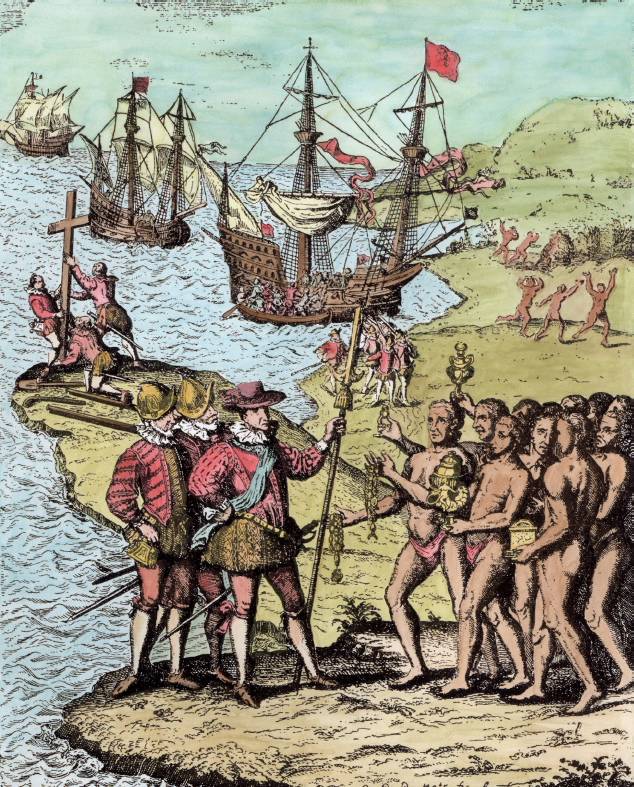VIEWPOINTS
| 16-3 | | Spanish Ambitions in the New World |
| THEODORE DE BRY, Columbus at Hispaniola (ca. 1590) |
In his letters to King Ferdinand and Queen Isabella, Columbus told his side of the story, describing his voyages in ways that were meant both to please his patrons and to emphasize his personal accomplishments. His was not the last word, however. In the decades following Columbus’s death, the motives behind his expeditions and the subsequent Spanish colonization of the Americas became matters of considerable debate. For example, this late-

READING AND DISCUSSION QUESTIONS
- Which motive did de Bry portray as most important? How did he indicate this?
- What importance should we attach to the fact that the cross on the left is being erected by a small group of soldiers? What does the scene tell us about de Bry’s views on Spanish missionary work in the Americas?
- What should we make of the Native Americans fleeing the Spanish ships on the right side of the engraving? What are they afraid of? Did de Bry believe their fears were justified?